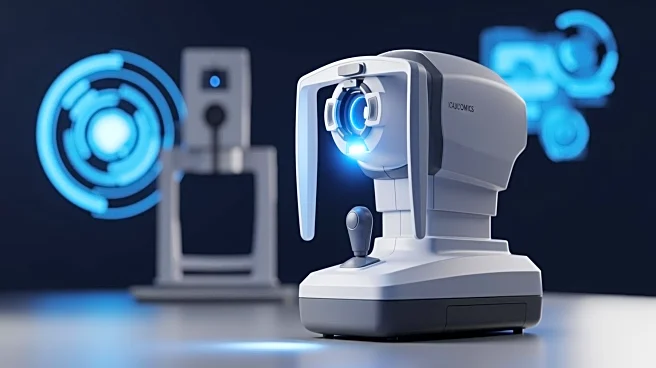What's Happening?
A recent study has developed machine learning models using dual-phase CT radiomics to improve the early detection of preserved ratio impaired spirometry (PRISm). PRISm is a condition characterized by normal FEV1/FVC ratios but reduced FEV1% predicted,
often overlooked in clinical practice due to nonspecific symptoms. The study involved 270 participants, divided into normal and PRISm groups based on pulmonary function tests. Dual-phase CT scans were used to extract radiomic features, which were then analyzed using machine learning algorithms to construct predictive models. The logistic regression model demonstrated the best predictive performance, achieving high accuracy and area under the curve (AUC) scores in both internal and external validation cohorts. The study highlights the potential of radiomics and machine learning in enhancing diagnostic accuracy for respiratory conditions.
Why It's Important?
The development of machine learning models for early detection of PRISm is crucial as it addresses the challenge of diagnosing a condition that can progress to more severe stages of chronic obstructive pulmonary disease (COPD). Early detection allows for timely intervention, potentially preventing disease progression and improving patient outcomes. The use of CT radiomics and machine learning represents a significant advancement in respiratory medicine, offering a non-invasive and accurate diagnostic tool. This approach could lead to better management of respiratory diseases, reducing healthcare costs and improving quality of life for patients. The study's findings may influence clinical practices, encouraging the adoption of advanced imaging techniques and data analysis in routine diagnostics.
What's Next?
The study suggests further validation and refinement of the machine learning models to ensure their applicability in diverse clinical settings. Collaboration between healthcare institutions and technology developers could facilitate the integration of these models into clinical workflows. Additionally, exploring the use of similar methodologies for other respiratory conditions could expand the impact of this research. Stakeholders such as healthcare providers and policymakers may consider the implications of adopting advanced diagnostic technologies, balancing innovation with cost-effectiveness and accessibility.
Beyond the Headlines
The use of machine learning and radiomics in healthcare raises important ethical and legal considerations, particularly regarding data privacy and the accuracy of AI-driven diagnostics. Ensuring that these technologies are used responsibly and transparently is essential to maintaining patient trust and safety. The study also highlights the potential for personalized medicine, where diagnostic tools are tailored to individual patient profiles, enhancing treatment efficacy.













